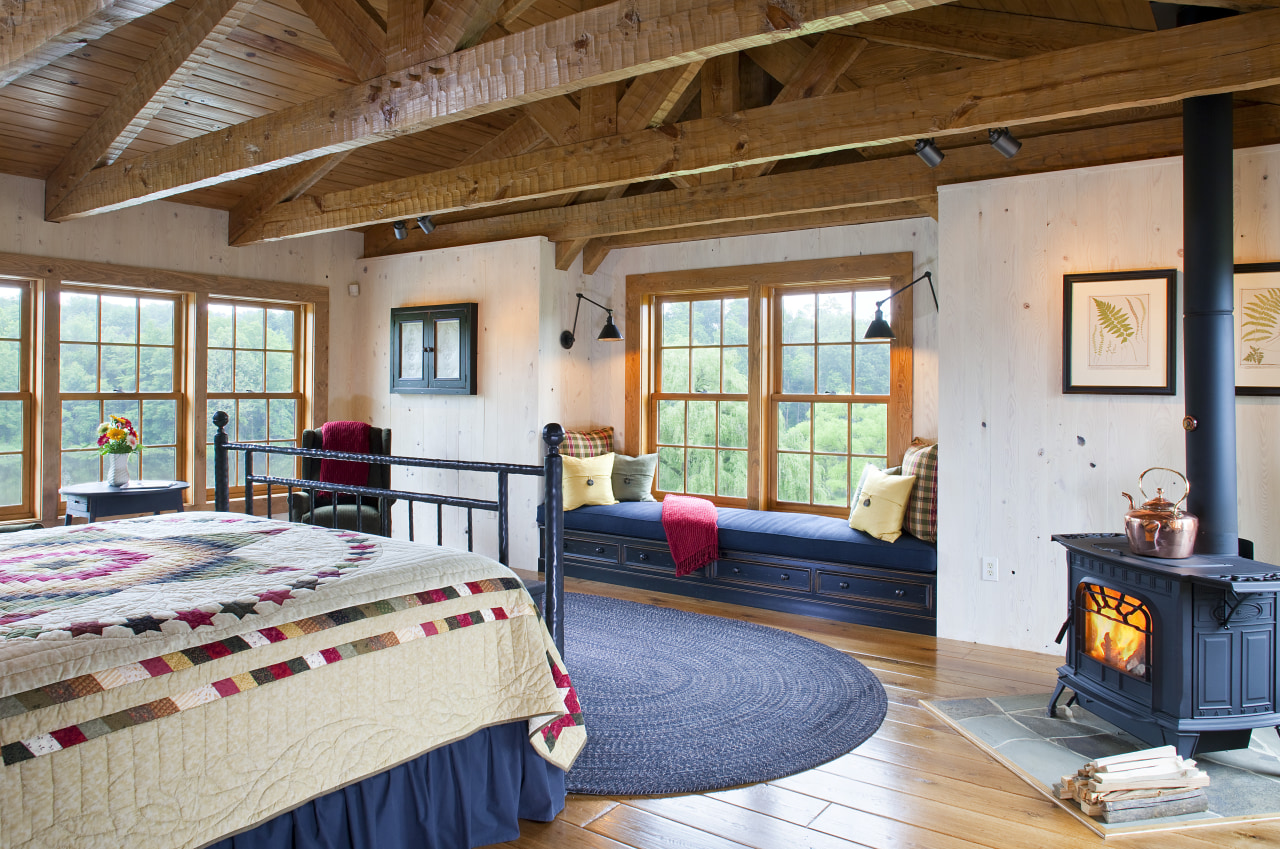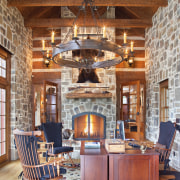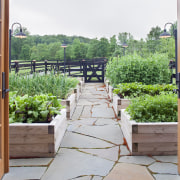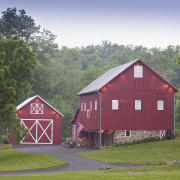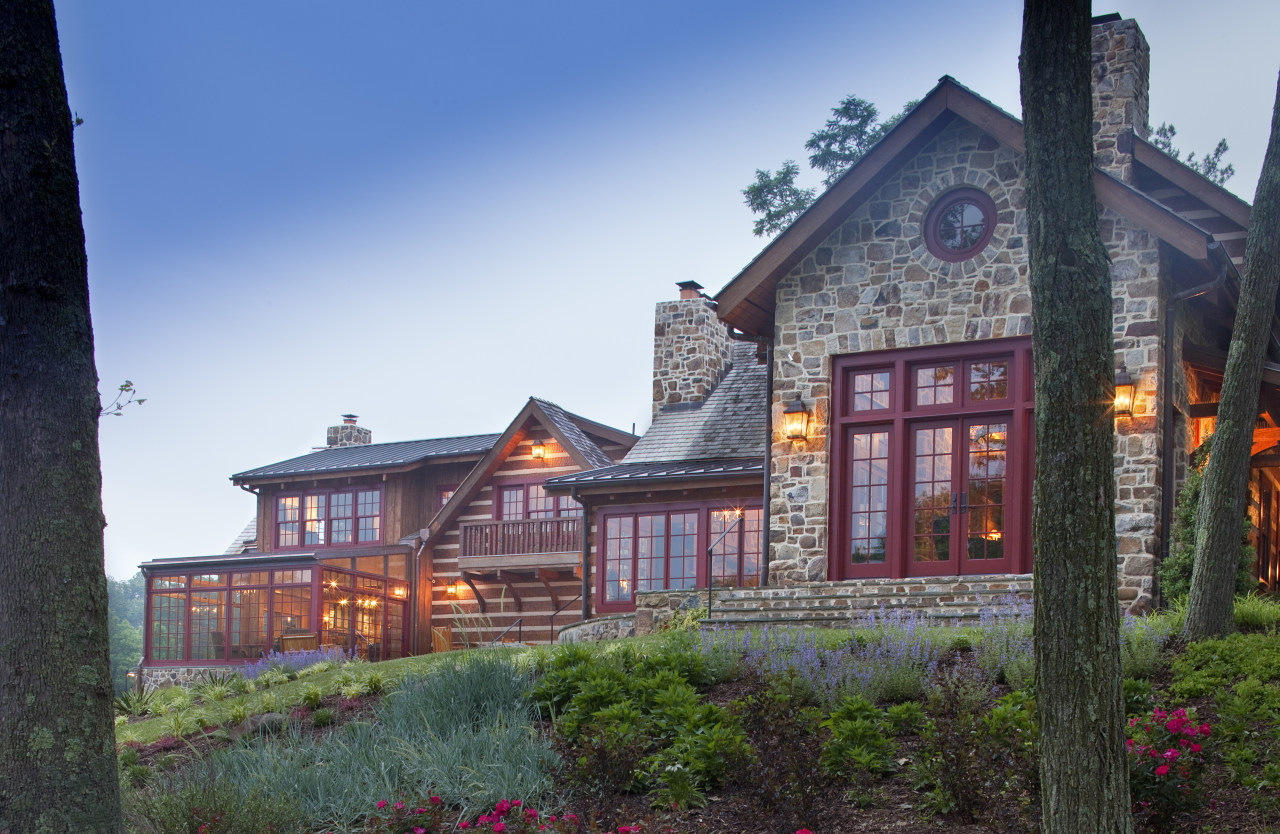History is a backdrop
Log-cabin country house pays homage to the past
When you buy a property in an older, well-established city precinct, there's a reasonable likelihood you are buying a slice of history. It is less likely to happen in the country, unless you live in an area renowned as a key battlefield during the American Civil War of the 1860s.
That was the case for the owners of this country estate in Adams County, PA the pond on the 215-acre property sits on the Mason-Dixon Line, which separates Mar-yland and Pennsylvania and was formed to settle a property dispute in the 1700s.
Architect Jim Rill of Rill Architects says the property, which had been farmed for many years, included several barns and an original log cabin thought to have belonged to a trapper family there were stains in the attic to corroborate the story.
"The owners wanted to retain the sense of history associated with the land," he says. "The barns were retained and repainted in their original red. However, the cabin, which had undergone many unsympathetic additions and alterations over the centuries, was not fit to be restored, but we were able to reuse many of the logs."
Not surprisingly, the traditional rural architectural vernacular helped determine the design of the new house, which was built in two stages.
"The owners were familiar with log cabin construction and wanted such a home for their country retreat," says Rill. "It needed to be rustic and authentic, with hand-hewn timbers, and it also had to look as though it had evolved over time."
Rill says the setting of the house was another key consideration. As well as maximizing the picturesque water and woodland views, the house needed to nestle into the land.
"The property had a lot of romantic potential, so we didn't want the house to look as though it had just been popped down on the site. We chose to site it beside the pond, where it is framed by several large trees, yet still bathed in sunlight."
In the first stage of the construction, a traditional, Pennsylvania-style log cabin with squared, interlocking logs was built. In keeping with tradition, the log cabin also features mortice and tenon joints and chinking, where the gaps between the logs are filled with a cementitious mix. And part of the house is clad in local fieldstone another authentic reference.
"We wanted the house to look like an original log cabin that had been added onto over the years," says Rill. "Or perhaps, an original stone house that had a log cabin added to it."
To reinforce the architectural influence, there is a stone tower element, reminiscent of a grain silo, which houses an elevator.
Board-and-batten ceilings feature on the interior, along with hand-hewn wood beams, and trusses have been specially selected, milled and distressed to look as though they have been taken straight from an old barn.
Despite the expanse of wood ceilings and walls, the interior is light and airy, thanks to large banks of colonial-style windows on both sides of the house.
"Transparency right through the house was essential," says Rill. "The windows let the house breathe and make for an immediate connection to the outdoors. In fact, the outdoor living areas are treated as extra rooms that are as much a part of the house as the rooms inside.
"The three main structures that make up the house have been positioned to create courtyards, with the gaps between the buildings framing key views and landscape elements. The relationship between the buildings and the openings created between them are just as important as the buildings themselves."
The main volume accommodates the entry, living room, great room, kitchen, study and guest bedrooms. This is linked by a glazed walkway to a more recent addition that houses a conservatory overlooking the pond, and a large family room-library.
"The owners' weekend getaway has turned into a regular retreat for family and friends," says the architect. "The couple entertain extensively, and the new library and conservatory make it a lot easier to accommodate large numbers of people."
Although designed to look as though it has been there for generations, the kitchen has all the functionality and space needed to cater to a crowd.
Rather than specifying natural wood cabinets, the architect chose traditionally styled painted cabinets in different colors, which are reminiscent of cupboards pushed up against the wall.
"This is exactly how kitchens looked in the original cabins," says Rill. "Similarly, the island has a furniture look with a butcher's block countertop."
The dining area is located in the great room, in front of a stone fireplace, one of many in the house. Other key features of the property include several sitting areas, and a large master suite on the upper floor of the new addition, which has extensive views. There is also a separate potting shed, with a studio above. This features the same flagstone floors as the main circulation areas within the house.
Top: The master suite, on the top floor of the addition, is a private sanctuary for the owners. Special features include a window seat, wood-burning fire and wide-plank flooring.
Credit list
Builder
Landscape designer/contractor
Roofing
Lighting
Kitchen cabinets
Kitchen company
Siding
Exterior stone
Flooring
Paints and stains
Countertops
Story by: Trendsideas
Home kitchen bathroom commercial design
